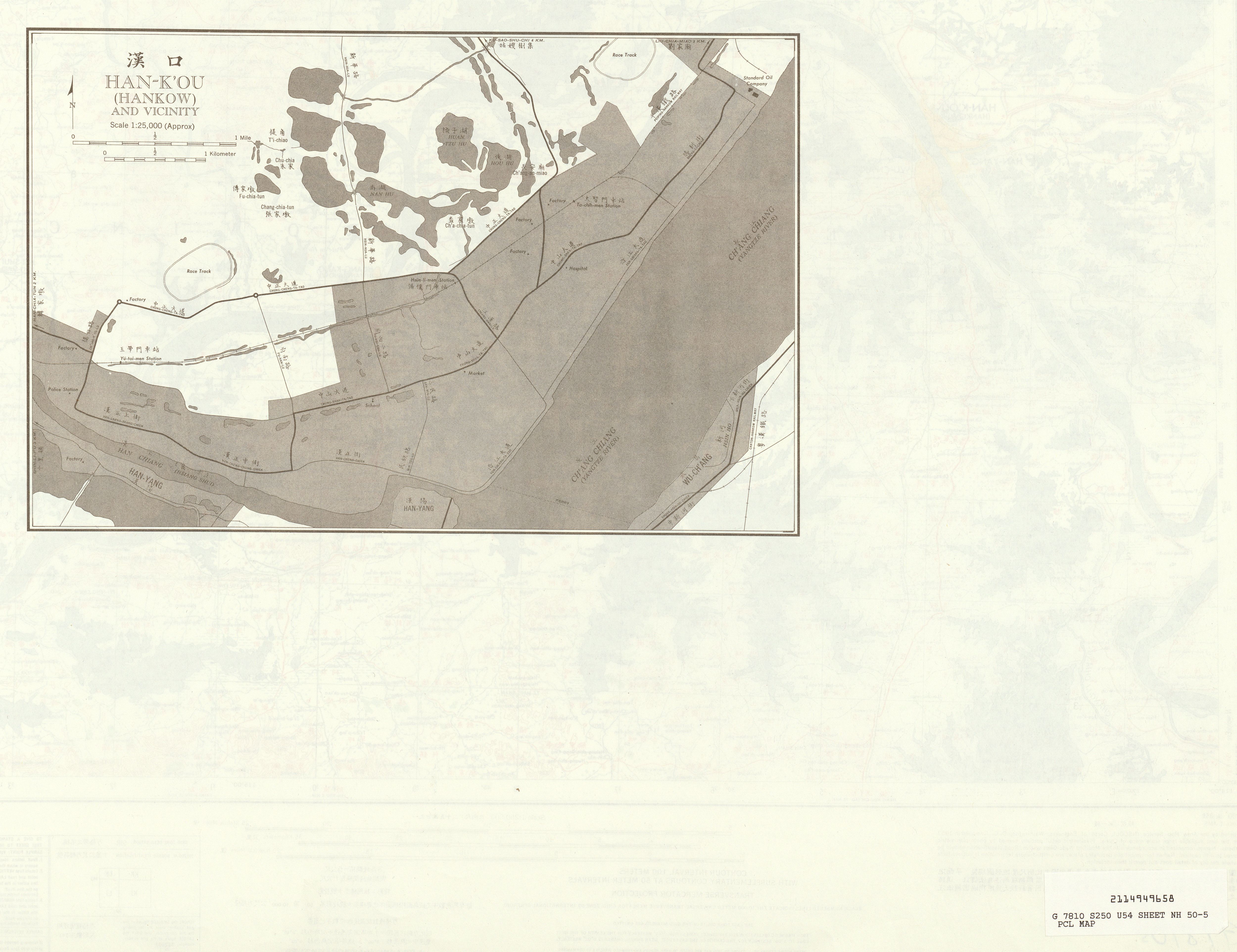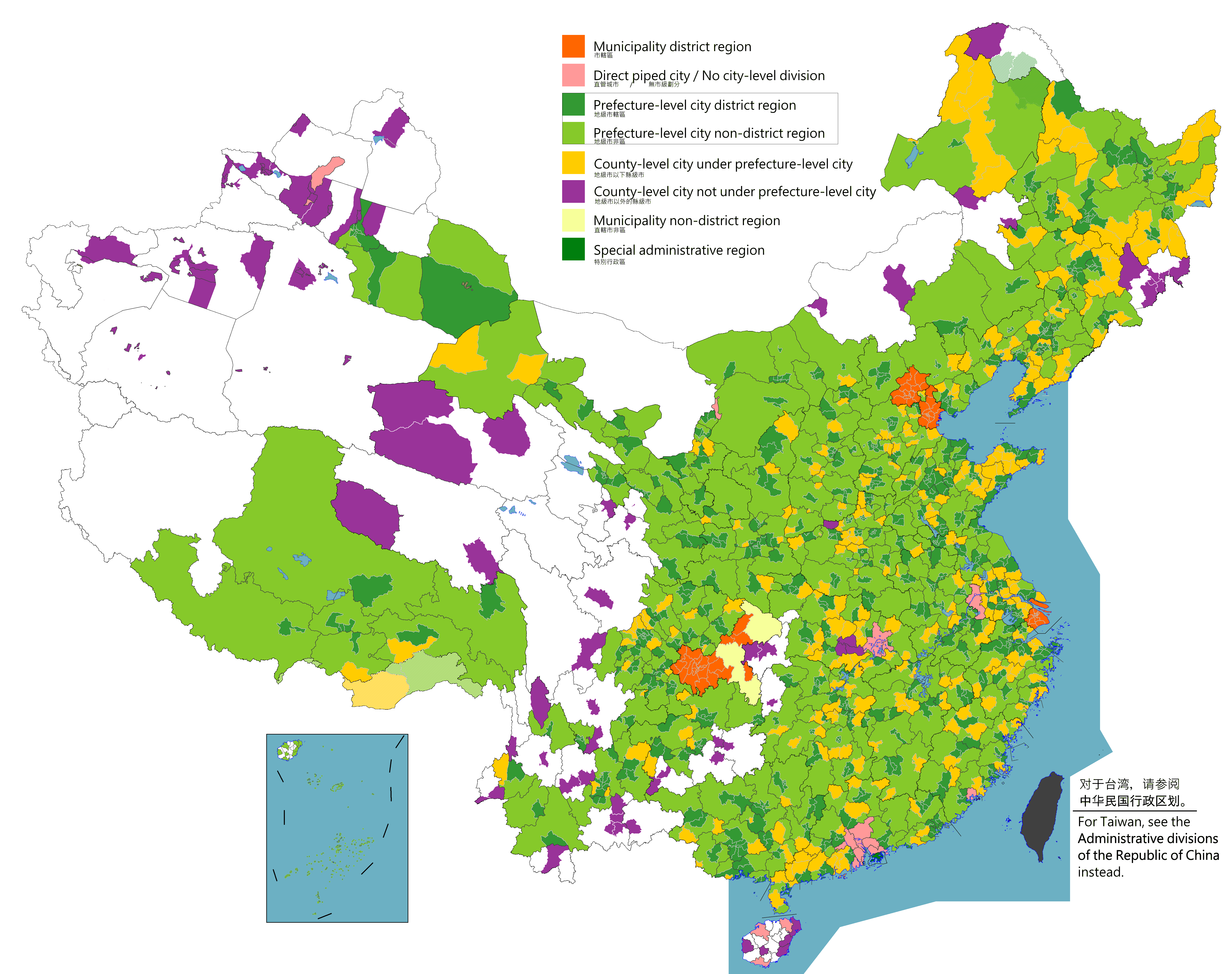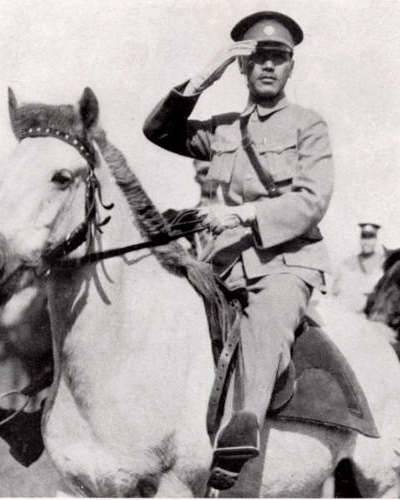|
Hankou
Hankou, alternately romanized as Hankow (), was one of the three towns (the other two were Wuchang and Hanyang) merged to become modern-day Wuhan city, the capital of the Hubei province, China. It stands north of the Han and Yangtze Rivers where the Han flows into the Yangtze. Hankou is connected by bridges to its triplet sister towns Hanyang (between Han and Yangtze) and Wuchang (on the southern side of the Yangtze). Hankou is the main port of Hubei Province and the single largest port in the middle reaches of Yangtze. History The city's name literally means "Mouth of the Han", from its position at the confluence of the Han with the Yangtze River. The name appears in a Tang dynasty poem by Liu Zhangqing. Other historical names for the city include Xiakou (), Miankou (), and Lukou (). Hankou, from the Ming to late Qing, was under the administration of the local government in Hanyang, although it was already one of the four major national markets ( :zh:四大名镇) in ... [...More Info...] [...Related Items...] OR: [Wikipedia] [Google] [Baidu] |
Wuhan
Wuhan; is the capital of Hubei, China. With a population of over eleven million, it is the most populous city in Hubei and the List of cities in China by population, eighth-most-populous city in China. It is also one of the nine National central city, national central cities and the second most livable city in China. Wuhan historically served as a busy city port for commerce and trading with some crucial influences on Chinese history. The name "Wuhan" came from the city's historical origin from the conglomeration of Wuchang, Wuhan, Wuchang, Hankou District, Hankou, and Hanyang District, Hanyang, which are collectively known as the "Three Towns of Wuhan" ( zh, s=武汉三镇, labels=no). Wuhan lies in the eastern Jianghan Plain, at the confluence of the Yangtze river and its largest tributary, the Han River (Hubei), Han River, and is known as "Nine Provinces' Thoroughfare" ( zh, labels=no, t= ). Wuhan was the site of the 1911 Wuchang Uprising against the Qing dynasty which Dyna ... [...More Info...] [...Related Items...] OR: [Wikipedia] [Google] [Baidu] |
List Of Cities In China
According to the administrative divisions of China, administrative divisions of the China, People's Republic of China, there are three levels of cities: provincial-level cities (consisting of Direct-administered municipalities of China, directly-administered municipalities and the Special administrative regions of China, special administrative regions of Hong Kong and Macau), Prefecture-level city, prefecture-level cities, and County-level city, county-level cities. As of January 2024, the PRC has a total of 707 cities: 4 municipalities, 2 SARs, 293 prefecture-level cities (including the 15 Sub-provincial division, sub-provincial cities) and 408 county-level cities (including the 38 Sub-prefectural city, sub-prefectural cities and 12 Xinjiang Production and Construction Corps, XXPC cities). This list does not include any cities in the Political status of Taiwan, disputed Taiwan Province and Fujian Province, Republic of China, portions of Fujian Province, which are claimed by ... [...More Info...] [...Related Items...] OR: [Wikipedia] [Google] [Baidu] |
Wuchang, Wuhan
Wuchang is one of 13 urban districts of the prefecture-level city of Wuhan, the capital of Hubei Province, China. It is the oldest of the three cities that merged into modern-day Wuhan, and stood on the right (southeastern) bank of the Yangtze River, opposite the mouth of the Han River. The two other cities, Hanyang and Hankou, were on the left (northwestern) bank, separated from each other by the Han River. The name "Wuchang" remains in common use for the part of urban Wuhan south of the Yangtze River. Administratively, however, it is split between several districts of the City of Wuhan. The historic center of Wuchang lies within the modern Wuchang District, which has an area of and a population of 1,102,188. Other parts of what is colloquially known as Wuchang are within Hongshan District (south and south-east) and Qingshan District (north-east). Presently, on the right bank of the Yangtze, it borders the districts of Qingshan (for a very small section) to the northeast ... [...More Info...] [...Related Items...] OR: [Wikipedia] [Google] [Baidu] |
Northern Expedition
The Northern Expedition was a military campaign launched by the National Revolutionary Army (NRA) of the Kuomintang (KMT) against the Beiyang government and other regional warlords in 1926. The purpose of the campaign was to reunify China proper, China, which Warlord Era, had become fragmented in the aftermath of the 1911 Revolution. The expedition was led by Generalissimo Chiang Kai-shek, and was divided into two phases. The first phase ended in a 1927 political split between two factions of the KMT: the right-leaning Nanjing Nationalist government, faction, led by Chiang, and the Government of the Republic of China in Wuhan, left-leaning faction in Wuhan, led by Wang Jingwei. The split was partially motivated by Chiang's Shanghai massacre, Shanghai Massacre of Communists within the KMT, which marked the end of the First United Front. In an effort to mend this schism, Chiang Kai-shek stepped down as the commander of the NRA in August 1927, and went into exile in Japan. The sec ... [...More Info...] [...Related Items...] OR: [Wikipedia] [Google] [Baidu] |
Han River (Shaanxi And Hubei)
The Han River, also known by its Chinese names Hanshui and Hanjiang, is a major river in Central China. A left tributary of the Yangtze, the longest river in Asia, it has a length of and is the longest tributary of the Yangtze system. The river gave its name to the ancient Chinese Han dynasty, which marked one of ancient China's first golden ages and through it, to the Han Chinese, the dominant ethnic group in modern China and the most populous ethnic group in the world. It is also the namesake of the city of Hanzhong on its upper course. Geography The headwaters of the Han flow from Mount Bozhong in southwestern Shaanxi. The stream then travels east across the southern part of that province. Its highland valley—known as the Qinba Laolin—divides and is protected by the Qinling or Qin Mountains to its north and the Dabashan or Daba Mountains to its south. The main cities are Hanzhong in the west and Ankang in the east. It then enters Hubei. It crosses most of Hubei from ... [...More Info...] [...Related Items...] OR: [Wikipedia] [Google] [Baidu] |
Republic Of China (1912–1949)
The Republic of China (ROC) began on 1 January 1912 as a sovereign state in mainland China following the 1911 Revolution, which overthrew the Manchu people, Manchu-led Qing dynasty and ended China's imperial China, imperial history. From 1927, the Kuomintang (KMT) Northern expedition, reunified the country and initially ruled it as a one-party state with Nanjing as the national capital. In 1949, Nationalist government, the KMT-led government was defeated in the Chinese Civil War and lost control of the mainland to the Chinese Communist Party (CCP). The CCP Proclamation of the People's Republic of China, established the People's Republic of China (PRC) while the ROC was forced to Retreat of the government of the Republic of China to Taiwan, retreat to Taiwan; the ROC retains control over the Taiwan Area, and political status of Taiwan, its political status remains disputed. The ROC is recorded as a founding member of both the League of Nations and the United Nations, and previous ... [...More Info...] [...Related Items...] OR: [Wikipedia] [Google] [Baidu] |
Hanyang District
Hanyang District () forms part of the urban core of and is one of 13 urban districts of the prefecture-level city of Wuhan, the capital of Hubei Province, China. Currently, it is a district and stands between the Han River (right/southern bank) and the Yangtze River (left/northwestern bank), where the former drains into the latter. It is connected by bridges with its former sister cities, Hankou and Wuchang. Presently, on the left bank of the Yangtze, it borders the districts of Qiaokou to the north across the Han River, Jianghan to the northeast, Caidian to the southwest, and Dongxihu to the northwest; on the opposite bank it borders Wuchang and Hongshan. Guiyuan Temple is located in Hanyang. The name "Hanyang" means "the Yang side of Han River", referring to the town's historic location on the north ("yang") bank of the Han River mouth. However, the lower Han River changed course to the north side of the town during Ming dynasty's Chenghua-era. The town, now on the ... [...More Info...] [...Related Items...] OR: [Wikipedia] [Google] [Baidu] |
Han River (Hanshui)
The Han River, also known by its Chinese names Hanshui and Hanjiang, is a major river in Central China. A left tributary of the Yangtze, the longest river in Asia, it has a length of and is the longest tributary of the Yangtze system. The river gave its name to the ancient Chinese Han dynasty, which marked one of ancient China's first golden ages and through it, to the Han Chinese, the dominant ethnic group in modern China and the most populous ethnic group in the world. It is also the namesake of the city of Hanzhong on its upper course. Geography The headwaters of the Han flow from Mount Bozhong in southwestern Shaanxi. The stream then travels east across the southern part of that province. Its highland valley—known as the Qinba Laolin—divides and is protected by the Qinling or Qin Mountains to its north and the Dabashan or Daba Mountains to its south. The main cities are Hanzhong in the west and Ankang in the east. It then enters Hubei. It crosses most of Hubei fro ... [...More Info...] [...Related Items...] OR: [Wikipedia] [Google] [Baidu] |
Hanyang, Wuhan
Hanyang District () forms part of the urban core of and is one of 13 urban districts of the prefecture-level city of Wuhan, the capital of Hubei Province, China. Currently, it is a district and stands between the Han River (right/southern bank) and the Yangtze River (left/northwestern bank), where the former drains into the latter. It is connected by bridges with its former sister cities, Hankou and Wuchang. Presently, on the left bank of the Yangtze, it borders the districts of Qiaokou to the north across the Han River, Jianghan to the northeast, Caidian to the southwest, and Dongxihu to the northwest; on the opposite bank it borders Wuchang and Hongshan. Guiyuan Temple is located in Hanyang. The name "Hanyang" means "the Yang side of Han River", referring to the town's historic location on the north ("yang") bank of the Han River mouth. However, the lower Han River changed course to the north side of the town during Ming dynasty's Chenghua-era. The town, now on the ... [...More Info...] [...Related Items...] OR: [Wikipedia] [Google] [Baidu] |
Hubei
Hubei is a province of China, province in Central China. It has the List of Chinese provincial-level divisions by GDP, seventh-largest economy among Chinese provinces, the second-largest within Central China, and the third-largest among inland provinces. Its provincial capital at Wuhan serves as a major political, cultural, and economic hub for the region. Hubei is associated with the historical state of E that existed during the Western Zhou dynasty (771 BCE). Its name means 'north of the lake', referring to Dongting Lake. It borders Henan to the north, Anhui and Jiangxi to the east, Hunan to the south, and Chongqing and Shaanxi to the west. The high-profile Three Gorges Dam is located at Yichang in the west of the province. History The Hubei region was home to sophisticated Neolithic cultures. By the Spring and Autumn period (770–476 BC), the territory of today's Hubei formed part of the powerful Chu (state), State of Chu. Chu, nominally a tributary state of the Zh ... [...More Info...] [...Related Items...] OR: [Wikipedia] [Google] [Baidu] |
Boxer Rebellion
The Boxer Rebellion, also known as the Boxer Uprising, was an anti-foreign, anti-imperialist, and anti-Christian uprising in North China between 1899 and 1901, towards the end of the Qing dynasty, by the Society of Righteous and Harmonious Fists, known as the "Boxers" in English due to many of its members having practised Chinese martial arts, which at the time were referred to as "Chinese boxing". It was defeated by the Eight-Nation Alliance of foreign powers. Following the First Sino-Japanese War, villagers in North China feared the expansion of foreign Spheres of influence#China, spheres of influence and resented the extension of privileges to Christian missionaries, who used them to shield their followers. In 1898, North China experienced several natural disasters, including the Yellow River flooding and droughts, which Boxers blamed on foreign and Christian influence. Beginning in 1899, the movement spread across Shandong and the North China Plain, destroying foreign pro ... [...More Info...] [...Related Items...] OR: [Wikipedia] [Google] [Baidu] |
Yangtze River
The Yangtze or Yangzi ( or ) is the longest river in Eurasia and the third-longest in the world. It rises at Jari Hill in the Tanggula Mountains of the Tibetan Plateau and flows including Dam Qu River the longest source of the Yangtze, in a generally easterly direction to the East China Sea. It is the fifth-largest primary river by discharge volume in the world. Its drainage basin comprises one-fifth of the land area of China, and is home to nearly one-third of the country's population. The Yangtze has played a major role in the history, culture, and economy of China. For thousands of years, the river has been used for water, irrigation, sanitation, transportation, industry, boundary-marking, and war. The Yangtze Delta generates as much as 20% of China's GDP, and the Three Gorges Dam on the Yangtze is the largest hydro-electric power station in the world. In mid-2014, the Chinese government announced it was building a multi-tier transport network, comprising railways, ... [...More Info...] [...Related Items...] OR: [Wikipedia] [Google] [Baidu] |





